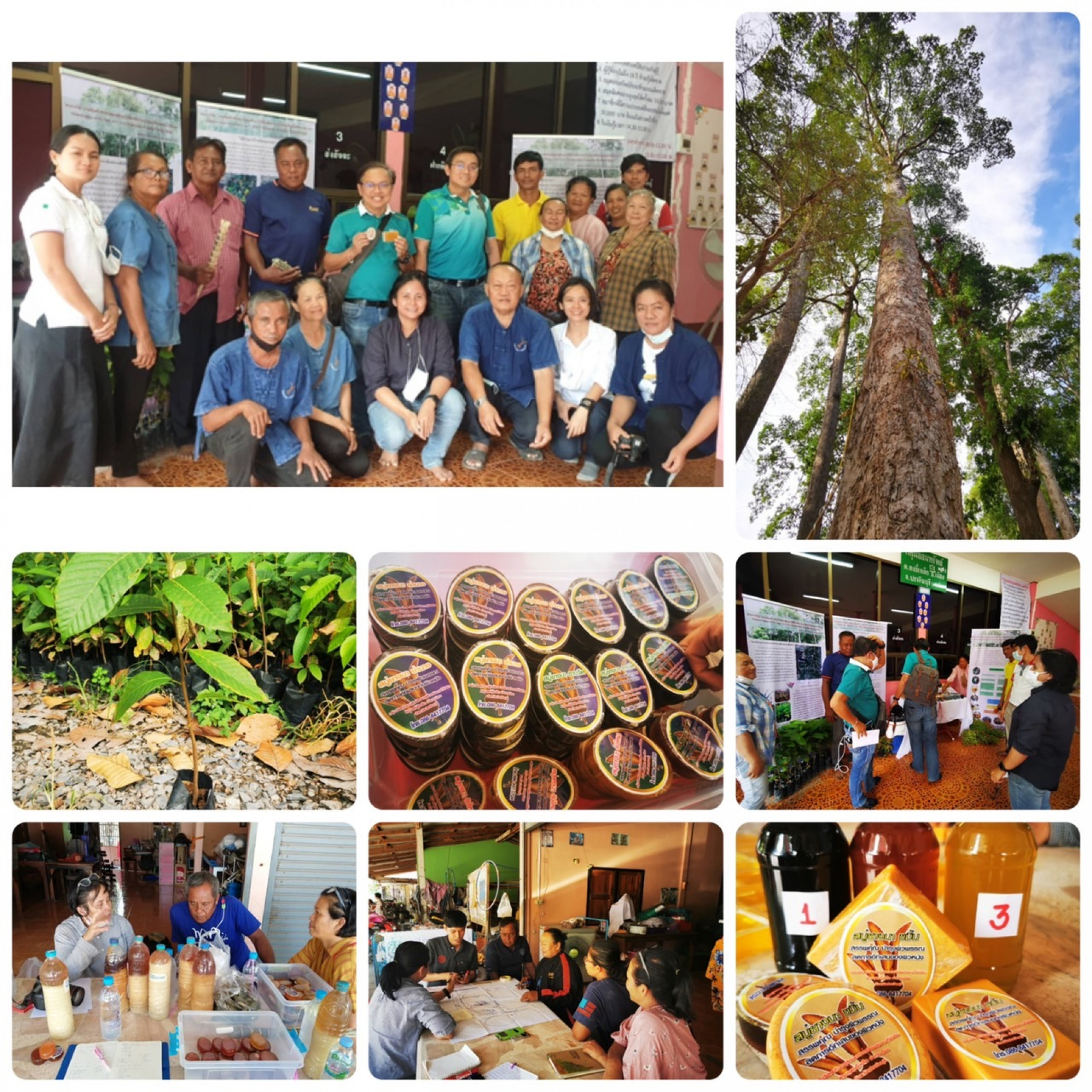





| Target | Indicator | Result |
|---|---|---|

SDG 10
REDUCED INEQUALITIES
|
||
| 10.2 By 2030, empower and promote the social, economic and political inclusion of all, irrespective of age, sex, disability, race, ethnicity, origin, religion or economic or other status | 10.2.1 Proportion of people living below 50 per cent of median income, by sex, age and persons with disabilities | Communities that promote the effective and sustainable use of natural resourcesIn addition, the value of community products creates employment opportunities and increases community income. |
An increase of forest areas through forest plantation participatory policy is currently distinguished in Thailand. It aims to secure wages, career, and quality of life as well as ecological integrity of those communities. Development of valuable woodlot community prototype is one of the key successes. Bodhivijjalaya College staffs had conducted the research project through value creation of natural resources capital of Kok Makok Community, Muang, Prachinburi. The objectives of this research, thus to empower the valuable woodlot community prototype on the conservation and utilization of Dipterocarpus alatus Roxb. ex G. Don at Baan Kok Makok, Muang, Prachinburi, and to obtain the approaches for valuable woodlot community establishment throughout the country. Results showed that Baan Kok Makok had self-reliance management based on natural resource capital, namely “Yangna (Dipterocarpus alatus)” which was the distinguished bio-resource base of the community. As mentioned above, the sustainable Yangna conservation and utilization community enterprise was established. The community enterprise had demonstrated the people’s participation as decision-making, cooperation, share benefit, and assessment of Kok Makok community. The potential of the Kok Makok community enterprise was well collaborative and knowledge sharing which encouraged the development of the enterprise. Various products of Yangna were obtained from the community enterprise such as soup, torch, resin, and seedlings. However, product identities, appropriate techniques, budget, and standard instruments were classified as the main problems in this study. It was considered as the beginning stage of the operation. Thus, the community enterprise had proposed the action plan as promoting the product identities, developing the cosmetic dermatology benefits, which can add the product value from Yangna of the community, and planning the sustainable uses and management of Yangna trees, which represent livelihood and culture of Kok Makok community.
Community's important natural capital, namely Dipterocarpus alatus, for efficient and sustainable management has been performed. Value creation of local community resources, quality assurance from community products, and increase employment and income for members of Ban Kok Makok Community were also implemented.
